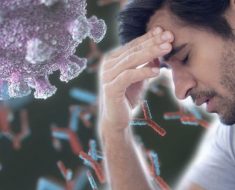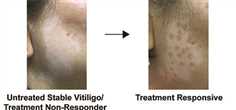The University of Maryland Strategic Partnership this week announced a transformative partnership to establish the University of Maryland 3 Institute for Health Computing, or UM-3-IHC.
WHY IT MATTERS
The effort is led by the University of Maryland, Baltimore and the University of Maryland, College Park, in collaboration with the University of Maryland Medical System and Montgomery County, Maryland.
The goal is to harness advances in artificial intelligence and machine learning to evaluate secure and deidentified and health data to diagnose, prevent and treat diseases in patients across the state of Maryland.
The new institute will focus on algorithms to enable precision patient care for diabetes, high blood pressure, risk of opioid overdose and other health risks.
“Scaling up research to address grand challenges in the life sciences has shifted from collecting data to using cutting-edge technology to discover meaningful patterns hidden in the data,” said Darryll J. Pines, president of the University of Maryland, College Park, in a statement.
“This Institute will tap world-class researchers who are exploring artificial intelligence, machine learning, and virtual and augmented reality to collaborate with medical experts, leading to broad impacts on human health and well-being.”
Researchers will also explore how immersive and 5G wireless technologies can boost the availability and efficacy of telehealth, and how virtual and augmented reality over 5G networks will expand the diagnostic capabilities of clinicians.
The institute is expected to open in leased space in early 2023, with final completion of laboratory and office space in the North Bethesda Metro area in 2028, officials say. Initial funding of $25 million is provided by MPower. Montgomery County government will provide an additional $40 million to develop the permanent site.
“We are witnessing an unprecedented revolution in health care that is being driven by biomedical innovation, the digitization of medical records, and advances in machine learning and artificial intelligence,” said UMB Dr. President Bruce E. Jarrell, in a statement. “This new Institute will include all of these elements in a synergistic effect that will transform our healthcare system.”
THE LARGER TREND
The Maryland officials behind UM-3-IHC note how North Bethesda’s proximity to NIST, NIH, FDA, Walter Reed, and the Naval Medical Research Center makes for an ideal location for cutting-edge research. The institute will bring convene researchers from two university partners prominent in these fields to explore how emerging technologies can facilitate knowledge discovery for human health and well-being.
The Institute will catalyze a clinical data science ecosystem at North Bethesda that draws FDA and NIH investigators, UMB and UMCP faculty, medical bioinformatic educational programs and students, and industry partners, allowing expansion of computational “dry” laboratories, virtual meeting rooms and classrooms.
Earlier this year, we reported how the University of Maryland School of Medicine expanded its telemedicine program to better reach patients in need of care.
In March, we described how the Center for Tech Innovation at the University of Maryland Medical System/UMD School of Medicine created a custom secure messaging platform, integrated into its EHR, which used a secure messaging API for flexibility and scalability.
ON THE RECORD
“Our vision is for this to become the East Coast Silicon Valley for health computing. The goals of this new Institute perfectly align with the University of Maryland School of Medicine’s new strategic vision to utilize disruptive technology and embrace and harness the power of clinical analytics and precision medicine to enhance patient care and provide population health services,” said Dr. Mark T. Gladwin, vice president for medical affairs at University of Maryland, Baltimore.
“De-identified data from 1.8 million patients within our System along with clinical research data from UMB will provide the backbone for advanced clinical analytics that may ultimately lead to faster diagnoses, improvements in how therapeutics are utilized and a range of other improved outcomes for our patients, as well as patients all over the world,” said Dr. Mohan Suntha, president and CEO of the University of Maryland Medical System.”
Twitter: @MikeMiliardHITN
Email the writer: [email protected]
Healthcare IT News is a HIMSS publication.
Source: Read Full Article





